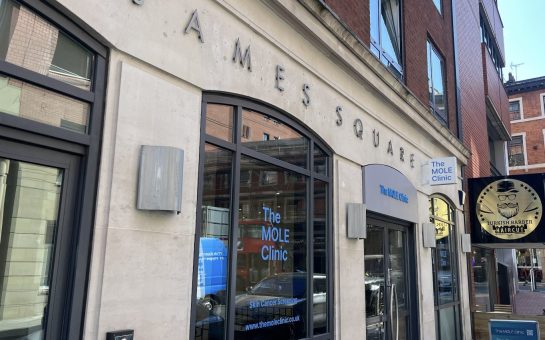The ‘miracle baby’ cured of HIV in America shows how important it is to treat the infection as early as possible, a Manchester University expert said today.
Being only the second person in the world to have successfully fought off the disease, the baby has brought hope to scores of infected children.
The child, who was born with the disease, began treatment a year ago and recent tests show no trace of the virus in her blood stream.
This breakthrough in HIV study does not mean a cure for adult sufferers, but a ray of hope for researchers who have attempted to slow the death rate of the disease since it was first observed in 1981.
After many years of research since the outbreak in the 1980s, could this potentially be the beginning of a cure that could free millions of HIV-infected children?
Dr Ian Hampson, a virologist from the University of Manchester’s Institute of Cancer Sciences, gave an insight into the development of a cure and explains more about the HIV virus.
“HIV has the ability to integrate into our DNA and become part of our cells where it can remain in an inactive or latent state for many years.
“It is partly this ability to hide and become part of us which makes it difficult to eradicate.
“During this process the virus produces countless copies of itself which will contain numerous genetic changes and these in turn infect more cells.
“It is also this ability to change which makes the virus difficult to treat.”
Doctors who participated in the treatment of the child developed a HIV treatment drug which was taken over the course of a year.
Dr Hampson recognises the importance of treating the infection very early on in the disease process before the virus has had chance to establish itself fully.
Using a cocktail of HIV resistant drugs made for infants, each pill could defend the immune system against the ever-changing ways the disease can affect the blood cells.
Dr Hampson added: “Since viruses are small they have a limited capacity to invent new ways of disabling our cells and they often use similar mechanisms to do this.
“This means that any drugs with antiviral activity against one virus should always be explored for activity against others.”
“There are other types of virus which also cause human disease. For example one is known to cause a type of leukaemia in adults and this virus is currently incurable.
“Simply put, if HIV can be eradicated it means it might be possible to do the same for other retroviruses.”
Virus researchers can now focus on releasing the treatment to other HIV positive children before the virus evolves into AIDS.
“In general HIV has always progressed more quickly in children when compared to adults probably due to the immune system being more competent in the latter,” he said.
“This means that treatment must begin very early into a child’s life, where the drugs can defend against the virus before the human body develops through puberty.”
The only other person to have been cured of HIV is Timothy Ray Brown known as the Berlin Patient.
Research into his recovery in 2007 is thought to have contributed to the curing of the child even though the treatment methods were different.
Mr Brown’s recovery was down to an elaborate treatment for leukaemia that involved the destruction of his immune system and a stem cell transplant from a donor with a rare genetic mutation that resists HIV.
However as Dr Hampson explained, medication used on children is thought to be more effective.
“The main breakthrough in HIV research has been the development of so called Highly Active Anti Retroviral Therapy (HAART) where several drugs are combined in one treatment.
“HAART has revolutionised the treatment of HIV with AIDS no longer being a death sentence.”
For more on this story and many others, follow Mancunian Matters on Twitter and Facebook.
Picture courtesy of AJC1, with thanks.



